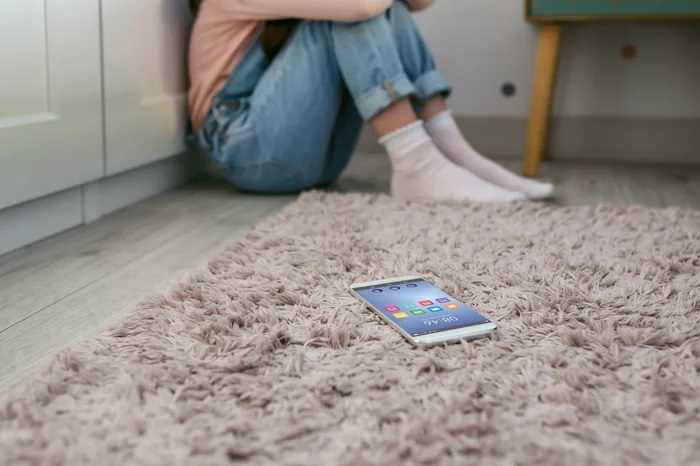
Emma Lembke was 12 years old when many of her friends started using phones and social media.
“Each one of them, as a result, was getting pulled away from kind of conversation with me, from hanging out with me, from even, like, playing on the playground, hanging out outside at school. It felt as though my interactions were dwindling,” Lembke told NPR.
It wasn’t just her experience. On average, teens in the U.S. are spending nearly 5 hours on social media every day. And the children and adolescents doing so seem to be paying the price.
Those who spend more than 3 hours a day on social media have double the risk of mental health problems like depression and anxiety, according to a study published in 2019 and cited by the Department of Health and Human Services.
Clinical psychologist Lisa Damour, who specializes in adolescent anxiety, says the more time a teen spends on their phone, the less likely they are to be focusing on other aspects of their life.
“Too much time on social media gets in the way of things that we know are good for kids, like getting a lot of sleep, spending time with people and interacting face to face, being physically active, focusing on their schoolwork in a meaningful way,” Damour told NPR. “So that’s one place that we worry about that they are missing out on things that are good for overall growth.”
The surgeon general’s call to action
Vivek Murthy, U.S. surgeon general, has zeroed in on what he has called the “youth mental health crisis” in the U.S.
This week, he published an op-ed in the New York Times calling for social media warning labels like those put on cigarettes and alcohol, in order to alert young people of the danger social media poses to their mental wellbeing and development. He cites the success of the tobacco and alcohol labels, which have discouraged consumption.
“The data we have from that experience, particularly from tobacco labels, shows us that these can actually be effective in increasing awareness and in changing behavior. But they need to be coupled with the real changes, [like] the platforms themselves,” Murthy told Consider This host Mary Louise Kelly.
“Right now, young people are being exposed to serious harms online, to violence and sexual content, to bullying and harassment, and to features that would seek to manipulate their developing brains into excessive use.”
Part of Murthy’s guidance includes keeping children off of social media platforms until their critical thinking skills have had more time to grow and strengthen against what the algorithms might be showing them.
“Imagine pitting a young person — an adolescent, a teenager — against the best product engineers in the world who are using the most cutting edge of brain science to figure out how to maximize the time you spend on a platform. That is the definition of an unfair fight, and it’s what our kids are up against today,” he said.
New guidelines moving forward
Damour says that the surgeon general’s call for a label is a great start to addressing the larger issue of how phone addictions are affecting young people.
“The other thing that is really important about the surgeon general’s recommendation is that he’s calling for legislation. He’s calling for congressional action to get in there and help with regulating what kids can be exposed to,” she said. “And I think this is huge right now. This is entirely in the laps of parents, and they are left holding the bag on something that really should be managed at a legal congressional level.”
Both Murthy and Damour say that raising awareness of certain strategies for parents can also help teenagers maintain more balanced lives. This can include:
- Waiting until after middle school to let kids get social media profiles.
- Using text messages as an intermediary step in allowing teens to keep in touch with their peers.
- And maintaining “phone free zones” around bedtime, meals and social gathering.




